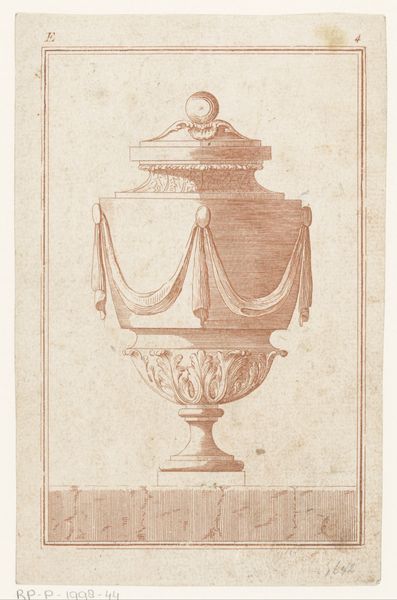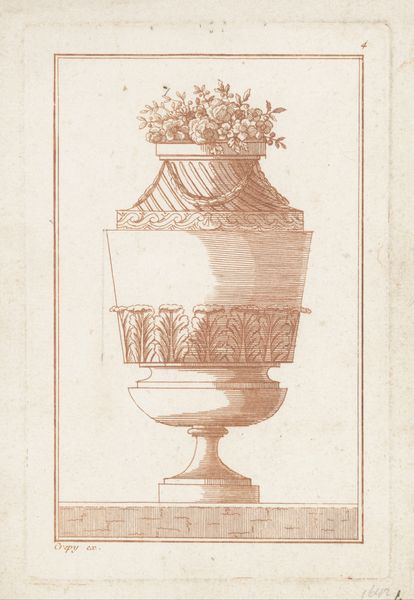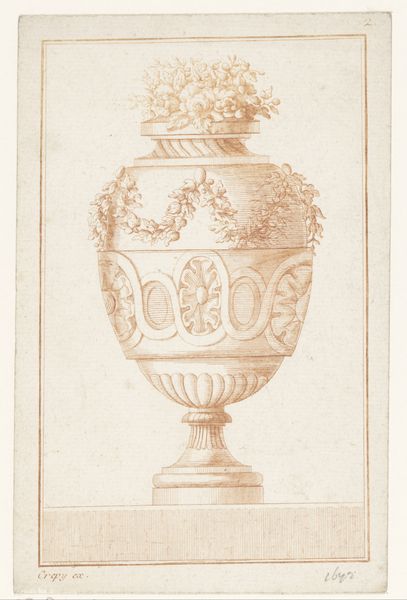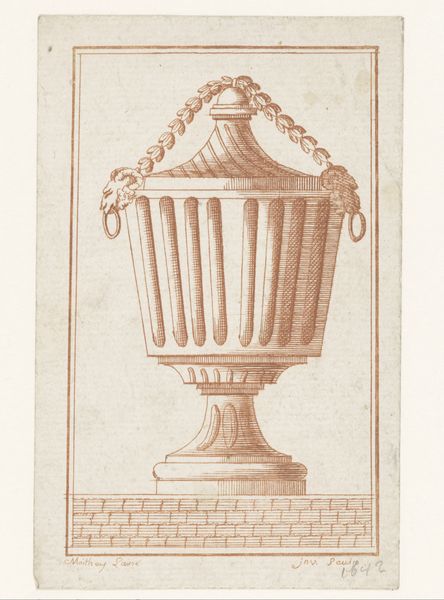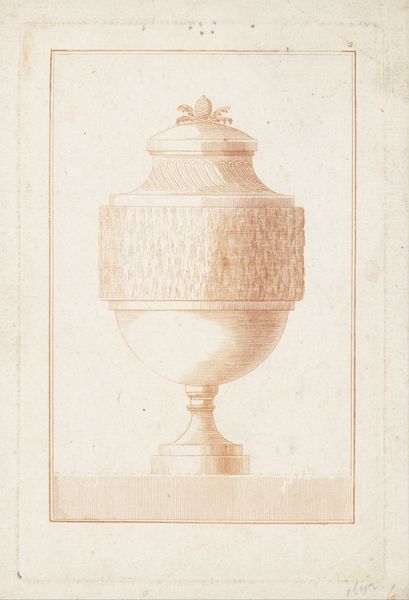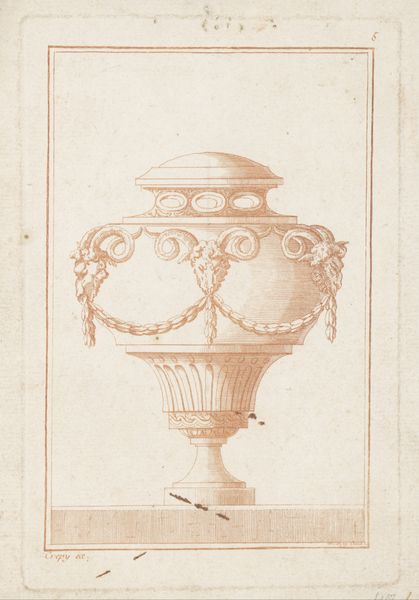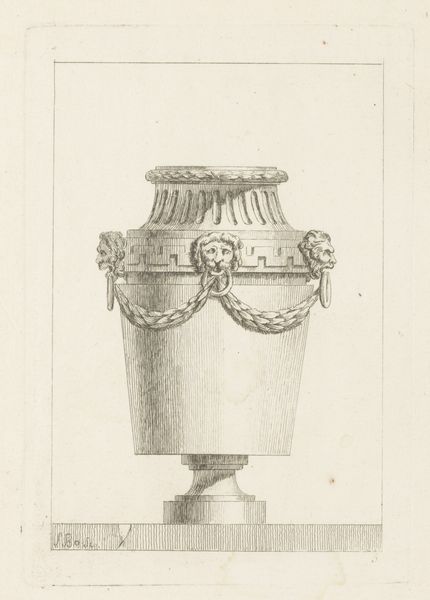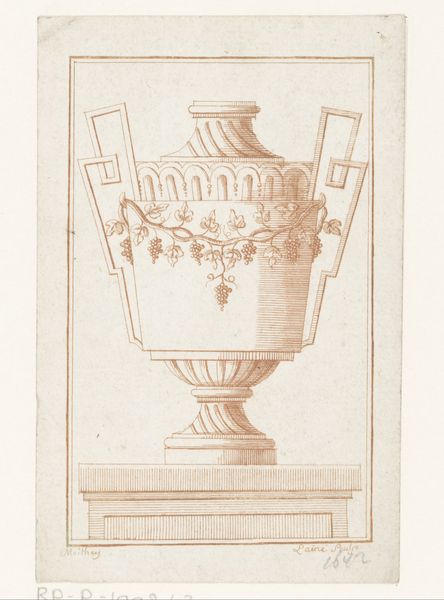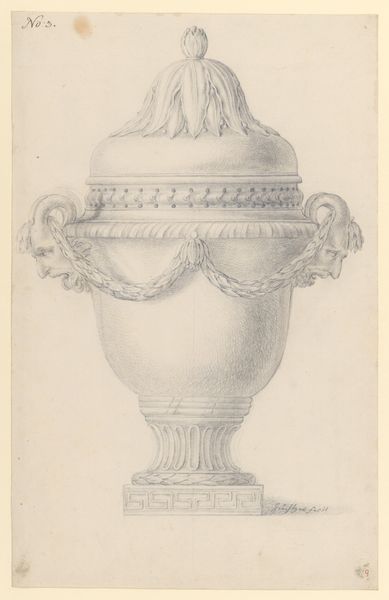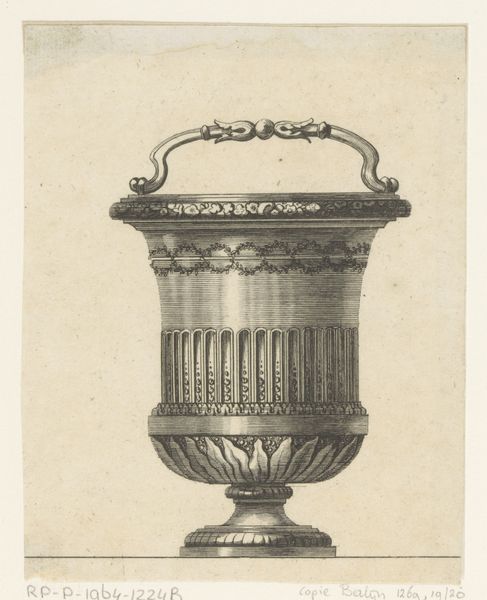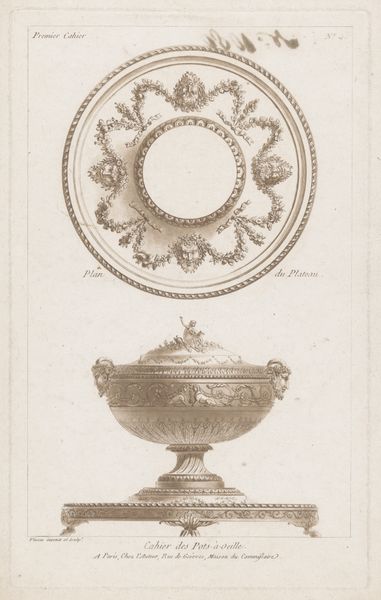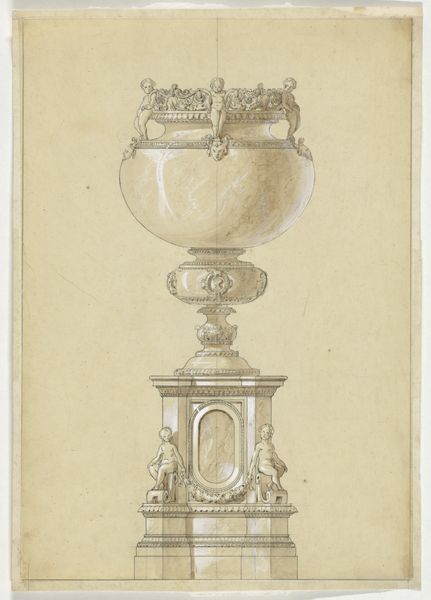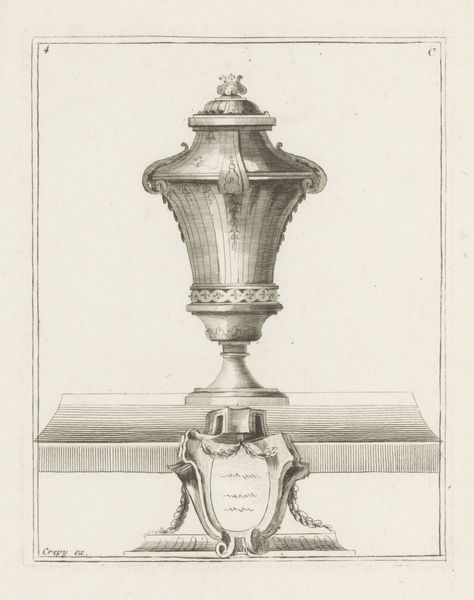
drawing, print, engraving
#
drawing
#
neoclacissism
# print
#
form
#
engraving
Dimensions: height 181 mm, width 117 mm
Copyright: Rijks Museum: Open Domain
This red chalk drawing, Vaas met draperie, shows a vase in elevation, and was made by P. Moithey the elder. Vases like this one were common in eighteenth-century France, not as functional objects but as luxury items displayed in the homes of the wealthy, and as models for artists and artisans. The drawing presents a symmetrical and idealized form, decorated with classical motifs such as oval medallions, lion heads, and swags. The clean lines and precise execution suggest a concern with order and rationality, values that were highly prized in French society at the time. The vase reflects an idealized version of antiquity, one that served the ideological purposes of the monarchy and aristocracy. Art historians investigate how classical forms were used to legitimize power and status. Architectural treatises, design manuals, and inventories of aristocratic collections are all vital resources to understand its place in the world. By studying these sources, we can appreciate how visual culture played a role in reinforcing existing social hierarchies.
Comments
No comments
Be the first to comment and join the conversation on the ultimate creative platform.
